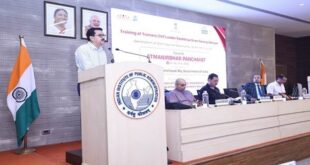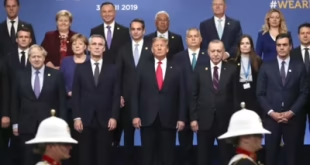- The ASER 2022 report shows that government schools saw a sharp rise in enrolment for the first time in 16 years; basic literacy levels of children have taken a big hit, with their reading ability, as compared with numeracy skills, worsening much more sharply and dropping to pre-2012 levels
- As schools reopened after nearly two years of closure due to COVID-19, student enrolments increased to more than pre-pandemic levels, but the learning gap widened for foundational skills in reading and arithmetic, reversing several years of improvement, finds the Annual Status of Education Report (ASER) 2022, released by Pratham, a non-governmental organisation, on Wednesday.
- The national-level study shows that despite school closures during the pandemic, the overall enrolment figures, which have been above 95% for the past 15 years for the six-to-14 age group, increased from 97.2% in 2018 to 98.4% in 2022.
- The ASER is a household survey conducted across 616 rural districts covering 6.9 lakh children in the three-to-16 age group to record their schooling status and assess their basic reading and arithmetic skills. The report is being brought out after four years and records the impact of school closures in 2020 and 2021, as well as the return to school of children in 2022. The proportion of children in the three-to-16 age group who are not currently enrolled dropped to its lowest level ever from 2.8% to 1.6% in 2018, when the last full-scale ASER survey was conducted.
- Government schools have seen a sharp increase in children enrolled from 65.6% in 2018 to 72.9% in 2022, reversing another trend of a steady decrease in student enrolments seen since 2006, when it was at 73.4%. Children’s basic literacy levels have taken a big hit, with their reading ability compared with numeracy skills worsening much more sharply and dropping to pre-2012 levels.
- The percentage of children in Class 3 in government or private schools who were able to read at the level of Class 2 dropped from 27.3% in 2018 to 20.5% in 2022. This decline is visible in every State, and for children in both government and private schools. The States showing a decline of more than 10 percentage points from the 2018 levels include those that had higher reading levels in 2018, such as Kerala (from 52.1% in 2018 to 38.7% in 2022), Himachal Pradesh (47.7% to 28.4%), and Haryana (46.4% to 31.5%). Large drops are also visible in Andhra Pradesh (22.6% to 10.3%) and Telangana (18.1% to 5.2%).
- Nationally, the proportion of children enrolled in Class 5 in government or private schools who can at least read a Class 2-level text fell from 50.5% in 2018 to 42.8% in 2022. The States showing a decrease of 15 percentage points or more include Andhra Pradesh (from 59.7% in 2018 to 36.3% in 2022), Gujarat (from 53.8% to 34.2%), and Himachal Pradesh (from 76.9% to 61.3%).
Basic reading ability
- The drops in basic reading ability are smaller for Class 8 students, where 69.6% of children enrolled in government or private schools who could read at least basic text in 2022 falling from 73% in 2018.
- Class 3 students who were able to at least subtract dropped from 28.2% in 2018 to 25.9% in 2022. While Jammu and Kashmir, Uttar Pradesh and Madhya Pradesh maintained or improved slightly over 2018 levels, steep drops of more than 10 percentage points are visible in Tamil Nadu.
- The proportion of children in Class 5 across India who can carry out division has also fallen slightly from 27.9% in 2018 to 25.6% in 2022.
- The performance of Class 8 students in basic arithmetic is more varied. Nationally, the proportion of children who can do division has increased slightly, from 44.1% in 2018 to 44.7% in 2022.
- This increase is driven by improved outcomes among girls as well as among children enrolled in government schools, whereas boys and children enrolled in private schools show a decline from the 2018 levels.
- Children in Class 8 in government schools did significantly better in 2022 than in 2018 in Uttar Pradesh (from 32% to 41.8%) and Chhattisgarh (from 28% to 38.6%), but were worse off in Punjab (from 58.4% to 44.5%).
- While families withdrew students from private schools to save money on fees, they invested in private tuitions, which increased as the proportion of such students rose from 26.4% in 2018 to 30.5% in 2022 in private and government schools.
- This may be the reason learning gaps are sharper in reading because students typically choose to study maths and science in tuition classes.
SOURCE: THE HINDU, THE ECONOMIC TIMES, PIB
 Chinmaya IAS Academy – Current Affairs Chinmaya IAS Academy – Current Affairs
Chinmaya IAS Academy – Current Affairs Chinmaya IAS Academy – Current Affairs



